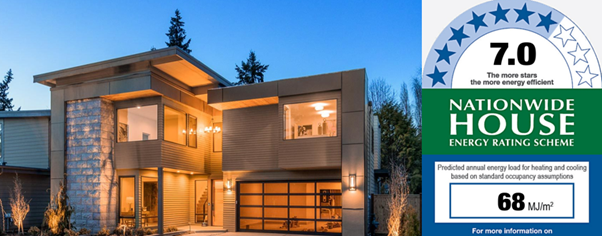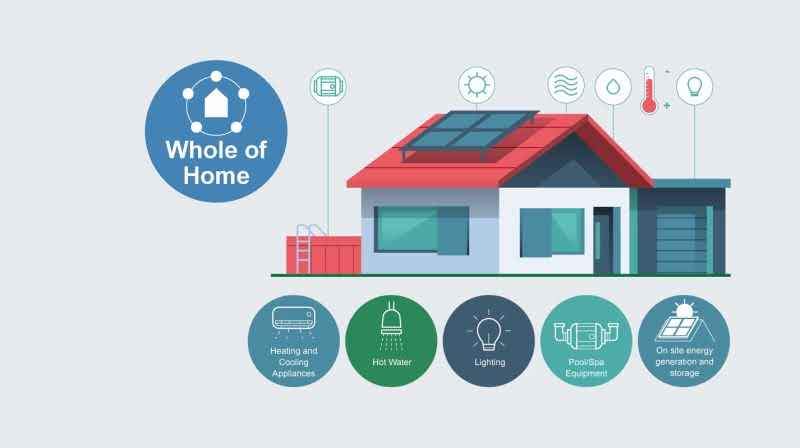
Since 2010 new homes in Australia have been built to a 6-star energy efficiency NatHERS rating, and from October 1st, 2023, builders will need to conform to a 7-star rating. The National Construction Code (NCC) update will include the energy performance of appliances used for hot water, heating and cooling, solar energy generation, and battery storage in a new “Whole of Home” rating to encourage residential builders and designers to consider the efficiency of the appliances they recommend. The new minimum will reduce home emissions by 25%.
NatHERS, which currently measures a home’s energy efficiency based on design and construction materials, will be expanded to support the NCC updates. It provides a rating out of 10 stars, considering factors such as insulation, walls, windows, and roofs. A 0 star home is considered to have no insulation value, while a 7-star home would be comfortable most days of the year. These changes aim to empower the community and the industry to construct energy-efficient, comfortable, and cost-effective homes.
Here’s how these changes will affect builders:
- Design considerations: Builders will need to incorporate solar energy systems into the design phase of new homes. This may involve working closely with architects and engineers to determine the optimal placement, and ideally, integration of solar panels, considering factors such as orientation, shading, and roof pitch. Builders may also need to account for additional roof space to accommodate larger solar installations to provide for increased electrical demand for electric vehicles and heat pumps.
- Collaboration with solar energy experts: To ensure the successful integration of solar energy systems, builders may need to collaborate with solar energy experts or consultants. These professionals can provide guidance on system sizing, energy production estimates, and the selection of appropriate solar technologies. Builders may also need to coordinate with electrical contractors for proper wiring and connection of the solar panels to the home’s electrical system.
- Increased demand for solar-ready homes: The emphasis on designing solar energy systems into new homes may create a growing demand for solar-ready properties. Builders who can offer homes with pre-installed solar infrastructure may have a competitive advantage in the market.
- Cost considerations: Integrating solar energy systems into the initial design and construction phase may result in higher upfront costs. Builders will need to account for the procurement and installation of solar panels, inverters, wiring, and associated components.
- Warranty challenges: Builders will need to reconsider roofing and solar options to ensure roof installations are warrantied for water tightness. Roofers are reluctant to warranty a roof against leakage if solar contractors install solar following roof installation due to penetrations for racks and wiring.
It’s essential for builders to stay updated on the specific details of the NCC changes and consult with industry associations, solar experts, and professionals to ensure compliance and successful integration of solar energy systems into new homes.
SOllOS makes it easy for builders to comply with the NCC changes by designing solar into the roof structure, integrating with all roofing materials and working with accredited roofers to provide a 10 year watertightness warranty on installations. The SOllOS system is competitive with conventional rack mounted solutions, yet it is an attractive solution offering peace of mind for builders and homeowners alike.
